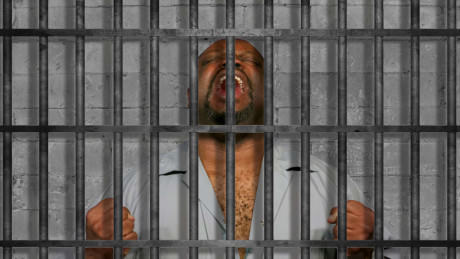The Movement: 50 Years of Love and Struggle is a powerful one-man show representing the Civil Rights struggle in America for the past 50 years. Impressively directed by Willette Thompson and featuring spoken word portions by Authoring Action, Ron Jones brings a myriad of characters to life in the Capital Fringe show about the various triumphs and struggles of African American culture after the Civil Rights movement in America.
Jones displays both his expansive comedic and dramatic skills in this one man show as he plays sharply contrasting characters. Ranging from a reverend devastated over the death of Martin Luther King Jr., to a scientist to an everyday working class man, Jones provided a distinctly different character voice, vocabulary and dialect for every individual character. Showing the passage of time and tying all of the events together throughout the narrative was the character William. Portraying an everyman working as a high school janitor who sees progress and pain for the African American community over the 50 year time span, Jones created an instantly identifiable character and unique framing device. William’s monologue to his newborn baby boy at the top of the show was absolutely touching and set the tone for the piece.
The show is presented as a multimedia production. Various PowerPoint presentations highlighting time lines and both inspirational and tragic events of the Civil Rights Movement are displayed. The projections served as transitions between scenes, allowing Jones to change costumes and characters. Several unique theatrical devices were used to take advantage of the technology. Jones had conversations with characters on-screen in pre-recorded video segments and his timing was exact to match the vocal rhythm and anticipate any delays as in a face-to-face conversation.
However, though the PowerPoint added an interesting technical element to the minimalist show, most of the PowerPoint presentations were too long. Transitions between scenes became longer and longer as the amount of information to display increased. In a theatrical show, audiences appreciate the innate human connection between the live actor and the audience as a form of art we cannot experience anywhere else outside of the theater.
Jones is incredibly talented as a performer and would benefit to increase his powerful stage time and interaction with the audience and condense the amount of information presented in the power points. Audiences can look up timelines and historical facts at home; we can only experience the live human stories and personal connections Jones brings to life in the theater. The human stories and individual characters who formed the Civil Rights movement in the piece provided a very impacting theatrical show.
The simple set, featuring a backdrop of white crepe curtains and simple solid colored black and white benches, is extremely minimal, allowing the audience to focus on Jones. The projection screen for the PowerPoint presentations hangs center stage and because of this, Thompson made some interesting blocking choices where, in a 90-minute one-man show, Jones is hardly ever standing center stage as one would expect. Instead, he is normally always off to the side of the projection screen, which allowed even closer interaction with the audience. His multiple costume changes, including one surprising outfit, even in historical context, are also simple, but various colors and patterns differentiate the characters and show the passage of time.
The Movement: 50 Years of Love and Struggle is a deeply moving show and Ron Jones delivers a powerful performance that must be seen. Aside from educating the audience, hopefully the performance encourages some thought about the human elements which formed the Civil Rights movement and how that movement and the issue of race continue to affect our society today.
Running Time: 90 minutes.
The Movement: 50 Years of Love and Struggle plays through July 23, 2015 at the Mead Theatre Lab at Flashpoint – 916 G Street, NW, in Washington, DC. For tickets, go to their Capitol Fringe Page.
LINK:
Read the preview article on DCMetroTheaterArts.





